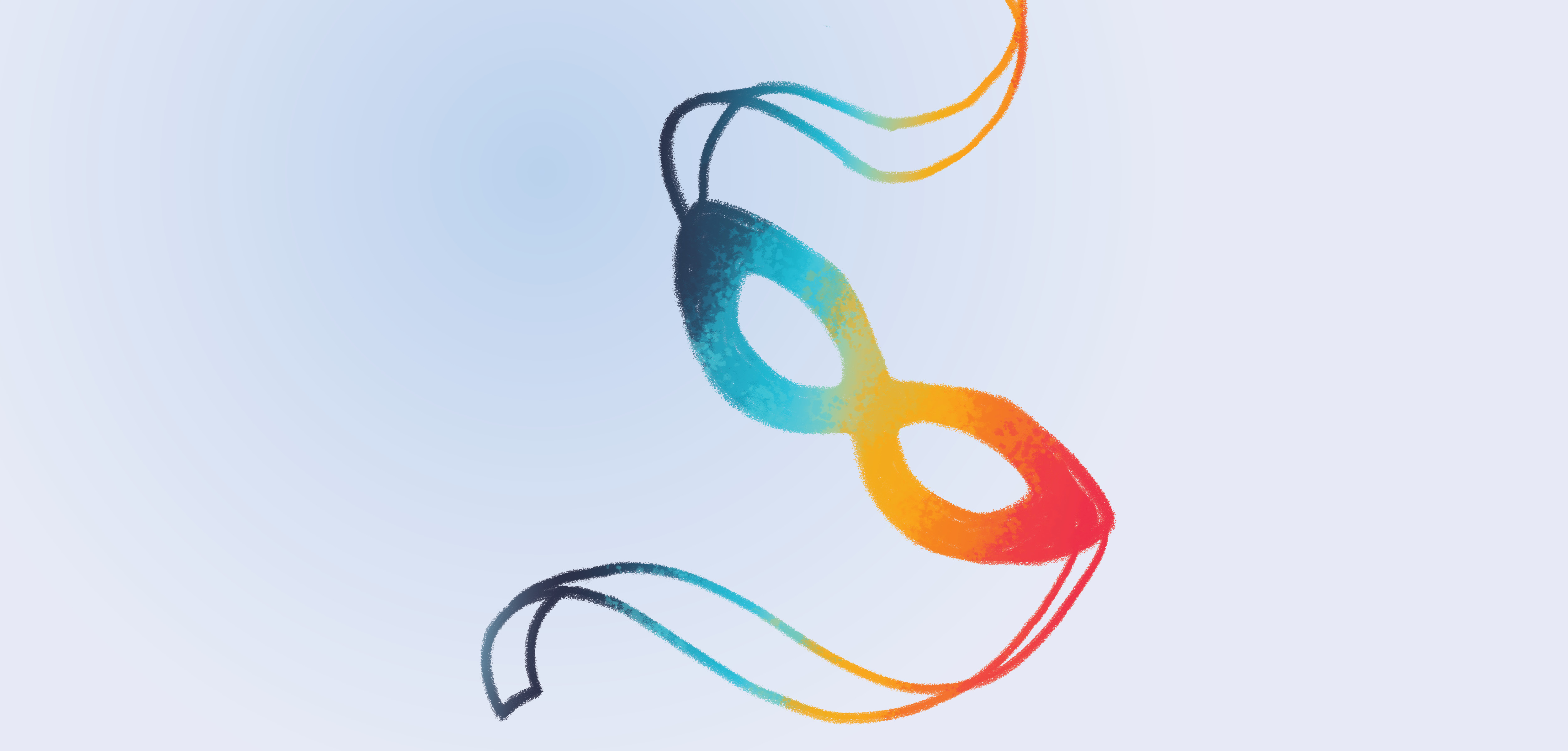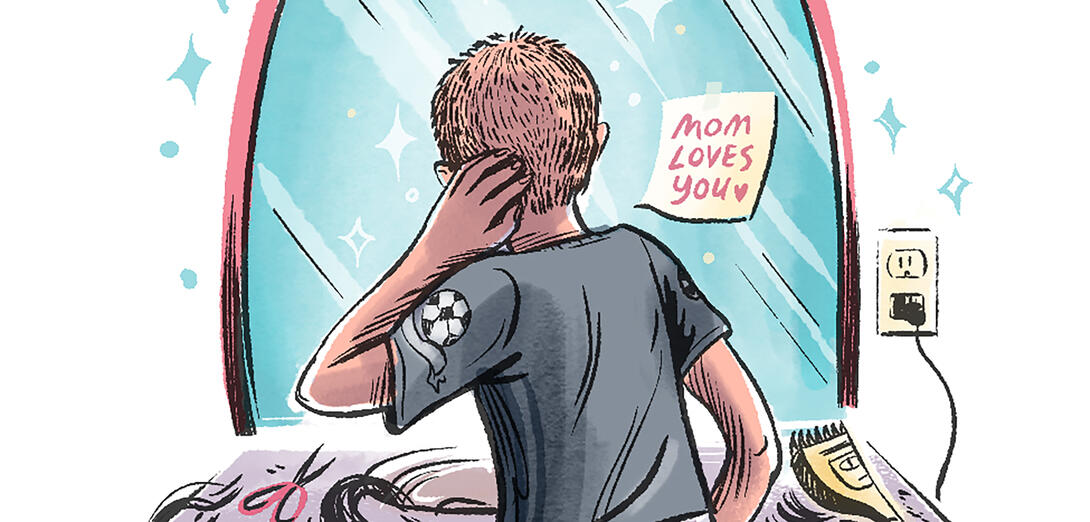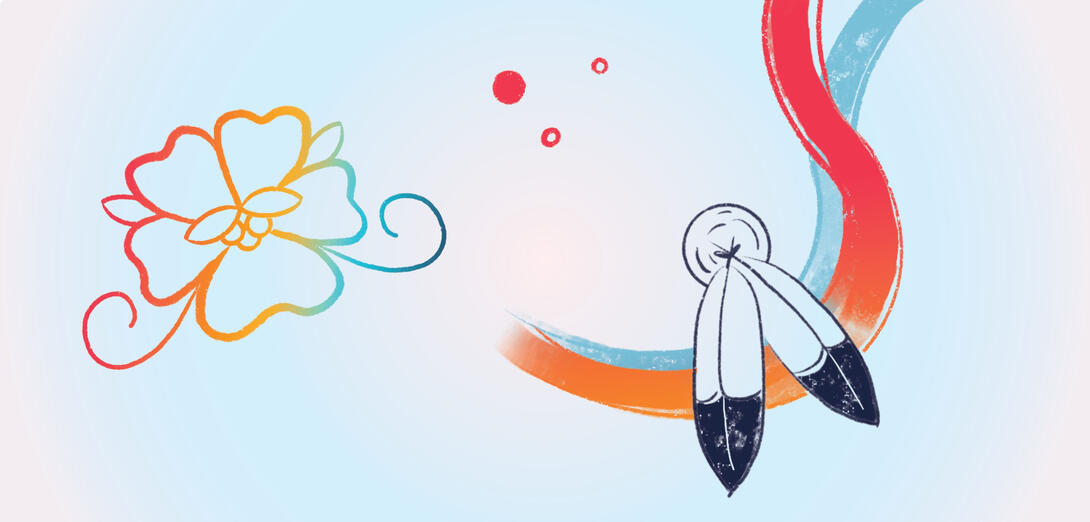It was the look on their faces—worry, pleading, but especially hope. I was sitting with student members of my school’s Gender and Sexuality Alliance (GSA), and they were waiting for me to answer their question.
“You are queer, right?”
What they really wanted to know was whether I was like them.
Their question left me with a choice. Was I going to be genuine and honest and come out, or was I going to continue to wear a mask of secrecy?
***
I always knew I was destined to teach. I was drawn to teaching long before I’d completed my own schooling, feeling that I could make a difference in students' lives. What I didn't always know was that I was transgender. It took me decades to learn and unlearn what it meant to be me. It wasn’t until university that I even heard the word transgender and longer still to understand the reason I was so drawn to this word.
Being a transgender teacher has brought many challenges, but also great purpose. During the year of my probationary contract, I considered coming out because I wanted to be my best self, but I wasn’t sure if doing so would impact my evaluation. When I approached my mentor teacher about it, he was personally supportive, but he suggested that I remain closeted until I had a continuous contract to protect myself from any potential systemic transphobia. His response confirmed many of my fears, so I complied.
Being in the closet is a constant battle of pretending to be something you are not, of thinking about everything you say and do, and ensuring you are not standing out. As a teacher at the front of the classroom, I felt like I was acting on a stage. Instead of being me, I was playing a character, the quirky teacher who never talks about themselves.
Eventually, I got so used to it that I could put on the teacher mask in an instant. All the while, my true self was underneath, pretending not to exist. Over time, I began to question myself and doubt which version of myself was real.
Wearing a mask each day felt inauthentic and ultimately impacted the quality of my teaching. I felt removed from my students and incapable of creating genuine connections with them. This detachment extended to my relationships with colleagues.
***
Going back to that moment in the GSA, with the 2SLGBTQIA+ students and their pleading looks, as my eyes met theirs, I knew I could not continue with the mask I’d been wearing for so long, so I answered them honestly.
“Yes. I am queer.”
The next moment was pivotal in my life, and came to be the driving force behind my commitment to fostering inclusion and diversity in our schools. The students’ faces lit up, and smiles broke out all around the room. The moment was huge for them, but it was also huge for me. I accepted that I could no longer conceal my true self.
Bolstered by my newfound confidence, I chose to be honest with my colleagues, but was cautious at first. I approached a couple of my closest friends and told them “I’m gay and I’m trans.” This may seem small, but to say it out loud, freely and without being asked was scary, but also freeing.
My colleagues smiled, chuckled a couple times and hugged me. One person even told me they knew something was wrong, that they knew I had been holding back, but they hadn’t pried because they hadn’t wanted to push. They asked me what name and pronouns I would like them to use, and they immediately began to use them.
The best part of their reaction was asking me what I wanted them to do with the information I had shared, how I wanted it spread around the school. With relief, I told them I did not want to have the conversation 100 times with 100 staff members. Instead, I asked them to tell staff members using my old name “Hey! Did you know that he is now going by Rin and he/him pronouns?” This way, the information could spread naturally in an easy and non-judgmental way.
My next step was a visit to my principal’s office. After hearing the same script I’d used with my colleagues, she smiled and asked why I seemed concerned. I explained that I was nervous about parent reactions and how she would handle pushback. She laughed, showing no signs of trepidation. Instead, she listed multiple policies and legal acts that protected me and thoroughly affirmed my right to be myself. This was the reassurance I needed, and from that point forward I held my head up high and began to teach as me.
This freedom to be my genuine self, to no longer second guess, and to be truthful positively overhauled my mental health. But it also affected my students, especially those who attended GSA or identified as 2SLGBTQIA+. When they spoke about their futures, I started to notice something ignite in their eyes and voices. Some of them said they wanted to be teachers, and I realized they were seeing themselves in me. They were seeing a successful, queer, trans adult who had built a life despite facing systemic pressures. I realized that, by existing as myself, not only could I be out, but I could create a safe and inclusive space for my students.
As I look back on that period of my career, with seven years of hindsight, I can see that my newfound commitment to authenticity improved my teaching, contributed to the education of my school community and empowered students to be their whole selves much earlier than I had had the opportunity to do.
My time leading teachers' GSAs has also opened my eyes to the breadth of experiences of 2SLGBTQIA+ educators. I have learned that many of my colleagues have had experiences similar to mine, while others have experienced the oppression and discrimination I had feared. Coming out is not right for everyone; your safety is most important. For me, looking back, coming out was what I needed, and I would not change my path. I just wish more of my colleagues could have experienced the warmth and love that I did.
About the author
Rin Lawrence (he/him) is a diversity consultant and teacher with over a decade of experience in Alberta's education sector. He chairs the Edmonton Public Teachers Local 37 Staff Gender and Sexuality Alliance, bringing personal insights from his lived experiences with sexual and gender diversity. Rin also serves as the lead organizer for the Alberta Teachers’ Association Gender and Sexuality Alliance, advocating for diversity as a unifying force and inspiring positive change in educational settings.
Acronyms and alternatives
Language is powerful. It elevates and celebrates as much as it represses and oppresses.
To create and maintain inclusive learning environments that welcome everyone, teachers and school leaders must be mindful of the words they use, especially when describing individuals or groups based on aspects of their identity, such as their gender.
The 2SLGBTQIA+ acronym reflects different genders and focuses on one or more of the four elements listed in the 'Those Kids' are our kids article.
Two-Spirit
Honours the wide range of traditional and contemporary Indigenous gender identities
Lesbian, Gay and Bi(sexual)
Focuses on romantic and sexual attraction
Intersex
An assigned sex for individuals whose anatomical, physiological and genetic characteristics fall outside of the conventional male–female binary
Trans
Used by people who do not identify with the sex assigned to them at birth
Questioning
A state of uncertainty or exploring of gender identity
Queer
Umbrella term used in multiple ways: to describe a gender identity, particular forms of attraction and expression, or to refer to all gender-diverse people
No single acronym or inclusive term works in all cases for all people, so here are some general recommendations:
Choose an acronym currently being used by a reputable Canadian organization:
- 2SLGBTQ+ (Statistics Canada)
- 2SLGBTQI+ (Egale Canada)
- 2SLGBTQIA+ (Public Service Alliance of Canada)
Use an inclusive term instead of an acronym. The Alberta Teachers’ Association uses “gender and relationship diverse” to recognize the important role different forms of attraction play in gender identity and to affirm diverse family structures.
Be specific. If you’re researching Two-Spirit and Indigiqueer youth or asexual and aromantic adults, use these terms.
Define your terms. For example, if you’re using queer as an inclusive term for all gender- and relationship-diverse people, explain that you won’t be using an acronym or a corresponding list of identities.



